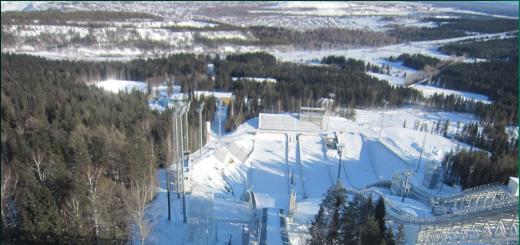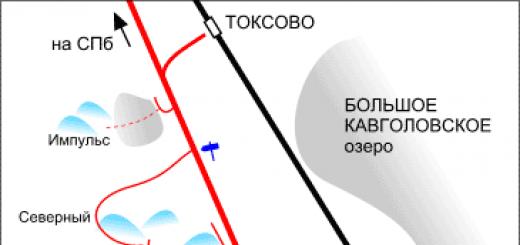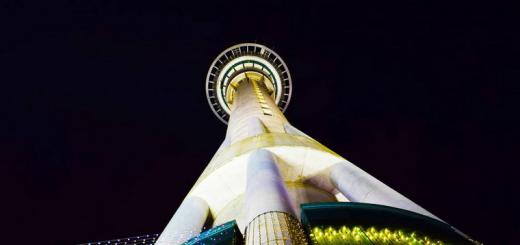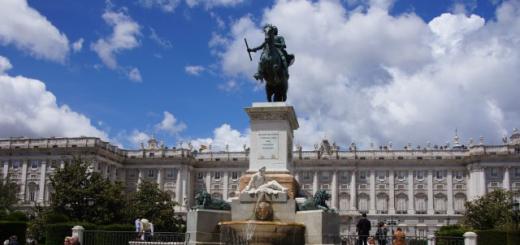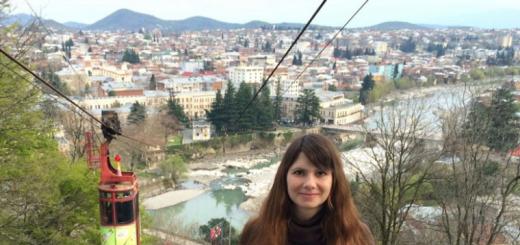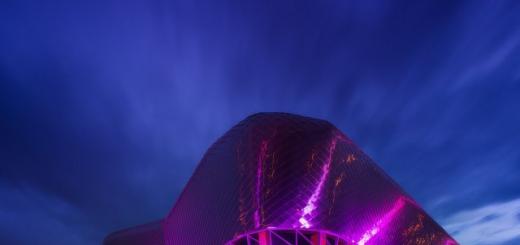The sixth wonder of the world is Alexandrian lighthouse (he is Pharos lighthouse). It was built in the 3rd century BC on the Mediterranean Sea.
In Egypt, on the small island of Pharos, not far from Alexandria, there was a bay of great importance for merchant ships. It is for this reason that the need arose for the construction of the Pharos lighthouse.
Hardly anyone imagined that an outstanding structure would enter. In the dark, the flames reflected by the water surface were visible at a distance of more than 60 kilometers, allowing ships to safely pass the reefs. In the daytime, instead of light, a plume of smoke was used, also visible from extremely far away.

After standing for almost 1000 years, the Lighthouse of Alexandria was seriously damaged by what happened in 796 AD. When the Arabs came to Egypt (XIV century), they decided to restore the grandiose building, reaching only 30 meters from the original height.
However, the reconstruction was not destined to be completed, and by the end of the 15th century, Kayt Bey, the famous sultan, founded a fortress on the foundation of the lighthouse. By the way, it still exists.

Interesting facts about the wonder of the world Alexandria lighthouse
During the reign of Ptolemy II in Egypt, it was decided to build the famous lighthouse. According to the plan, the implementation of the idea should have taken 20 years, but all residents saw the masterpiece much earlier. The main architect and builder of this building is Sostratus of Cnidus.
On the marble wall of the lighthouse, he carved his name, and then, applying thin plaster, wrote the words glorifying Ptolemy. Naturally, after a short time, the plaster sprinkled, and the name of the outstanding master entered the centuries. So, Sostratus completed the construction of the Pharos lighthouse in 5 years, which by the standards of antiquity was generally an instant!

The Alexandria lighthouse consisted of three towers. The first, lowest, rectangular part of the monument was used for technical purposes. Workers and soldiers lived there, and the tools and equipment necessary to maintain the lighthouse were kept. The second, octagonal tower towered over the first part.
A ramp wound around it to lift fuel for the fire. The third tier was a majestic cylindrical building equipped with a complex system of mirrors. It was here that a vital fire burned, spreading its light for many kilometers around.
The height of the sixth wonder of the world of the Pharos lighthouse ranged from 120 to 140 meters. At the very top was a statue of the god of the seas, Poseidon.

Some travelers, describing the miracle that struck them, mentioned the unusually arranged statues. The first pointed with her hand at, throughout the day, and when the sun went down, her hand dropped.
The second statue sounded every hour day and night. The third constantly indicated the direction of the wind, playing the role of a weather vane.

In the 12th century AD, ships stopped using the Alexandrian bay due to the fact that it became extremely muddy. This is what caused the outstanding structure to fall into complete decay. Even later, in the XIV century, due to an earthquake wonder of the world Alexandria lighthouse completely collapsed.
In its place, a fortress was erected, which changed its appearance more than once. Now on this historical site the base of the Egyptian fleet is located and, despite various proposals, the authorities do not consider the idea of restoring the lighthouse.
if you love Interesting Facts and stories from the lives of great people - subscribe to. It's always interesting with us!
Here you will learn about the only wonder of the ancient world. which had a practical purpose -. It allowed ships to approach the harbor without any problems, and the observation post located above made it possible to notice the enemy in time. Locals claimed that the light of the Alexandria lighthouse burned enemy ships. If they managed to get close to the shore, then the statue of Poseidon, located on the dome of the lighthouse, emitted a shrill warning cry.
Where was the Alexandria lighthouse
Few people do not know where was the lighthouse of Alexandria which was built on east coast the small island of Pharos, located near Alexandria - the main seaport Egypt, built by Alexander the Great in 332 BC. It is also known in history as the Pharos lighthouse.
The great commander chose the place for the construction of the city very carefully: he initially planned to build a port in this region, which would be an important trade center.
It was extremely important that he was at the intersection of both water and land routes of the three parts of the world - Africa, Europe and Asia. For the same reason, at least two harbors had to be built here: one for ships arriving from Mediterranean Sea and the other for those who sailed along the Nile. 
Therefore Alexandria was not built in the Nile Delta, but a little to the side, twenty miles to the south. When choosing a place for the city, Alexander took into account the location of future harbors, while paying special attention to their strengthening and protection: it was very important to do everything so that the waters of the Nile did not clog them with sand and silt (a dam was built specially for this, connecting the continent with island).
Then the height of buildings usually did not exceed three floors, because the lighthouse with a height of about one hundred meters was amazing how local residents and guests of the city. Moreover, at the time of completion of construction turned out to be the most tall building of the ancient world and was such for a very long time.
After the death of Alexander the Great, the city fell under the rule of Ptolemy I Soter - and as a result of skillful management it turned into a successful and prosperous port city, and the construction of one of the seven wonders of the world significantly increased its wealth.

Lighthouse of Alexandria: 7 wonders of the world
The Alexandria lighthouse made it possible for ships to swim into the port without any problems, successfully avoiding pitfalls, shallows and other obstacles of the bay. Thanks to this, after the construction of one of the seven wonders, the volume of trade of light increased dramatically.

The lighthouse also served as a reference point for sailors: the landscape of the Egyptian coast is rather monotonous - mostly only lowlands and plains. Therefore, the signal lights at the entrance to the harbor were very useful.
A lower structure would have successfully coped with this role, so the engineers assigned another important function to the Alexandria lighthouse - the role of an observation post: the enemies usually attacked from the sea, since the country was well defended by the desert from the land side.
It was also necessary to establish such an observation post at the lighthouse because there were no natural hills near the city where this could be done.
Construction of the Alexandria lighthouse
Such a large-scale construction required huge resources, moreover, not only financial and labor, but also intellectual. Ptolemy I solved this problem rather quickly: just at that time he conquered Syria, enslaved the Jews and took them to Egypt (some of them later he used to build a lighthouse).

It was at this time (in 299 BC) that he made a truce with Demetrius Poliorketus, ruler of Macedonia.
Thus, a truce, a huge amount of labor and other favorable circumstances gave him the opportunity to begin construction of a grandiose wonder of the world (although the exact date of the start of construction work has not yet been determined, the researchers are convinced that this happened sometime between 285/299 BC). BC.).
The presence of a dam, built earlier and connecting the island with the continent, greatly facilitated the task.

The construction of the Alexandria lighthouse was entrusted to the master Sostratus of Cnidia. Ptolemy wished that only his name be inscribed on the building, indicating that it was he who created this magnificent wonder of the world.
But Sostratus was so proud of his work that he first engraved his name on a stone, then applied a very thick layer of plaster on it, on which he wrote the name of the Egyptian ruler. Over time, the plaster crumbled, and the world saw the signature of the architect.
Alexandria lighthouse: a brief description
There is no exact information about how exactly one of the seven wonders of the world looked, but some data is still available:
It was surrounded on all sides by thick fortress walls, and in case of a siege, supplies of water and food were stored in its dungeons;
2 The height of the ancient building ranged from 120 to 180 meters;
3 The lighthouse was built in the form of a tower and had three floors;
4 Walls ancient structure were laid out of marble blocks and fastened with mortar with a small addition of lead.
5 The foundation of the structure was almost square - 1.8 by 1.9 meters, and granite or limestone was used as a building material;
6 The first floor of the Alexandria lighthouse had a height of about 60 m, while the length of the sides was about 30 m. Outwardly, it resembled a fortress or castle with towers installed at the corners. The roof of the first tier was flat, decorated with statues of Triton and served as the basis for the next floor. Here were located living quarters and utility rooms in which soldiers and workers lived, as well as various inventory was kept.
7 The height of the second floor was 40 meters, it had an octagonal shape and was faced with marble slabs;
8 The third tier had a cylindrical structure, decorated with statues that played the role of weather vane. Eight columns were installed here that supported the dome;
9 On the dome, facing the sea, stood a bronze (according to other versions - gold) statue of Poseidon, whose height exceeded seven meters;
10 Under Poseidon there was a platform on which a signal light burned, indicating the way to the harbor at night, while during the day its functions were performed by a huge column of smoke;
11 So that the fire could be seen from a great distance, a whole system of polished metal mirrors was installed near it, reflecting and intensifying the light of the fire, which, according to contemporaries, was visible even at a distance of 60 km;
There are several versions of how the fuel was lifted to the top of the lighthouse. The adherents of the first theory believe that a shaft was located between the second and third tiers, where a lifting mechanism was installed, with the help of which fuel for the fire was raised upward.
As for the second, it implies that the site where the signal light was burning could be accessed by a spiral staircase along the walls of the structure, and this staircase was so flat that loaded donkeys carrying fuel to the top of the lighthouse could easily climb up the building. ...
Lighthouse of Alexandria: wreck
It has served people for quite a long time - about a thousand years. Thus, he survived more than one dynasty of Egyptian rulers, saw Roman legionaries. This did not particularly affect his fate: whoever ruled Alexandria, everyone made sure that the unique structure stood as long as possible - they restored the building parts that had collapsed due to frequent earthquakes, renewed the facade, which was negatively affected by wind and salty sea water.
Time has done its job: the lighthouse stopped working in 365, when one of the strongest earthquakes in the Mediterranean caused a tsunami that flooded part of the city, and the death toll of Egyptians, according to chroniclers, exceeded 50 thousand inhabitants.
After this event, the lighthouse significantly decreased in size, but it stood for quite a long time - until the XIV century, until the next strongest earthquake wiped it off the face of the earth (a hundred years later, the Sultan Kait-bey built a fortress on its foundation, which can be seen and these days). The remains of a lighthouse look there today. 
In the mid-90s. The remains of the Alexandria lighthouse were discovered at the bottom of the bay using a satellite, and after a while, scientists, using computer modeling, were able to more or less restore the image of a unique structure.
Alexandrian lighthouse
In 285 BC. e. the island was connected to the shore by an artificial dam about 750 meters long. The construction of the lighthouse was entrusted to the famous architect Sostratus of Cnidus. He enthusiastically set to work, and five years later the three-story tower, about 120 meters high, was completed. The first floor in the form of a square was built of large slabs. Its walls, about 30.5 meters long, were facing the four cardinal points - north, east, south and west. The second floor was an octahedral tower faced with marble slabs and oriented in the direction of the eight main winds. A round lantern on the third floor was crowned with a dome, on which stood a seven-meter bronze statue of Poseidon, the god of the seas.
Alexandrian lighthouse.
Alexandrian lighthouse


In the years 332-331. BC. Tsar Alexander the Great in the Nile Delta founded Alexandria, which became the capital of Hellenistic Egypt. The city was remarkable because it was built according to a single plan. The richest quarters were Brucheion - a quarter of palaces, gardens, parks and royal tombs. There was also the tomb of Alexander the Great, whose body was brought from Babylon, where he died in 323 BC. The fame of Alexandria was also greatly facilitated by the world-famous Museion (temple of the muses) - a place for scientific studies and an educational refuge for scientists working in various branches of science. Museion became the center of scientific life in the brilliant Egyptian capital, something like an academy of sciences.
Lighthouse of Alexandria on the island of Pharos
Mathematics and mechanics developed especially successfully in Alexandria. Here lived and worked such outstanding scientists as the mathematician Euclid, who outlined the foundations of geometry in his work "Elements", and the inventor Heron of Alexandria, much ahead of his time. He created a variety of machines and built a device, in fact, a real steam engine.
Sometimes the creations of scientists amazed the imagination of their contemporaries. One of these miracles was Alexandrian lighthouse... It was built on a cliff overlooking the eastern coast of the island of Pharos. Due to shoals, pitfalls, sediments and sediments at the bottom of the sea, ships passed to the harbors of Alexandria very carefully.
The height of the Alexandria lighthouse
In 285 BC. e. the island was connected to the shore by an artificial dam about 750 meters long. The construction of the lighthouse was entrusted to the famous architect Sostratus of Cnidus. He enthusiastically set to work, and five years later the three-story tower, about 120 meters high, was completed.
- The first floor in the form of a square was built of large slabs. Its walls, about 30.5 meters long, were facing the four cardinal directions - north, east, south and west.
- The second floor was an octahedral tower faced with marble slabs and oriented in the direction of the eight main winds.
- A round lantern on the third floor was crowned with a dome, on which stood a seven-meter bronze statue of Poseidon, the god of the seas.
The dome rested on eight polished granite columns. A lighthouse fire burned here. Its light intensified, reflecting in a system of metal mirrors. The sailors saw him from afar, 60 kilometers away. Fuel for the fire was brought up on donkeys along a gentle spiral staircase.
Some researchers believe that there was an elevator inside the building that lifted firewood and people serving Alexandrian lighthouse.
The lighthouse was at the same time a fortress. There was a large garrison here. In the underground part of the tower, in case of a siege, there was a huge cistern for drinking water. Alexandrian lighthouse also served as an observation post - an ingenious system of mirrors made it possible to observe the sea space from the top of the tower and detect enemy ships long before they sailed to the city.


The octagonal tower was decorated with numerous bronze statues that served as weather vane or equipped with various mechanisms. Travelers told miracles about the statues.
One of them seemed to always point her hand at the Sun along the entire path of its movement across the firmament and lowered her hand when it set. The other beat every hour, day and night. It was as if there was such a statue, which pointed with its hand to the sea if an enemy fleet appeared on the horizon, and issued a warning cry when the enemy ships approached the harbor.
Alexandria Lighthouse - Wonder of the World
The Pharos lighthouse stood until the XIV century. By 1326, when it was finally destroyed by an earthquake, the height of the lighthouse was no more than 30 meters, that is, a quarter of the original height. But even in this form, this monument of ancient architecture aroused the admiration of Arab authors (in 640, Alexandria was conquered by the Arabs).
The remains of the tower's high pedestal have survived to this day, but they are completely unacceptable for architects and archaeologists, since they turned out to be built into a medieval Arab fortress.
In ancient times, all lighthouses began to be called the word "pharos". The memory of the miracle of construction technology has come down to us in the word "headlight".
Pharos in Alexandria - one of the structures Of the ancient world which he mentioned in his famous list"Seven Wonders of the Ancient World" Antipater of Sidon. The lighthouse was built at the beginning of the 3rd century BC: construction was started by Ptolemy Soter, ruler of Egypt, after the death of Alexander the Great in 323 BC.
The scale of the project of the lighthouse and its actual construction were impressive. Legends say that the light from it was visible from the sea for more than 50 km.
Alexandria
Pharos (the so-called Alexandria lighthouse) was built on the island of the same name, located in the harbor of the future Alexandria. When Alexander the Great arrived in Egypt in 332 BC. BC, Pharos was a shrine and home to Proteus, the god of the sea. When Alexander and his troops captured Memphis (the capital ancient egypt) and won, the Egyptian people were delighted and accepted him as their pharaoh.

When Alexander and his troops explored the new territory, they discovered the small fishing village of Rakotis. Its strategic location (on the coast) caught Alexander's attention and he announced that a new capital was to be built there: Alexandria.
Huge and rich, this city in the future will become a stronghold for the development of all types of arts and will preserve its memory in world history as the place where the oldest and largest library was created.
The new coastal was stretched horizontally in terms of geography, like the rest of Egypt. The state did not have any reference points that could help ships navigate the sea.
Thus, the decision to build a lighthouse was linked to the needs of the sailors. Later, the Lighthouse of Alexandria will perform a protective, defensive function.
Lighthouse project
The Alexandria Lighthouse was designed by the Greek architect Sostratus of Cnidus. It was built of light colored stone, which was reinforced with molten lead. This technology made it possible to protect the walls of the structure from violent sea waves.
The lighthouse consisted of three parts: the lower (square level) provided reliable support for the entire structure, an octagonal pillar rose in the middle of the lighthouse, and the upper level was a circular structure. A mirror was installed at the top of the lighthouse, which reflected the light of the sun during the day, and at night a fire was lit on the lighthouse.
Although many researchers refute this myth due to technological limitations, recent experiments have shown that there could indeed be fires: the reflective abilities of the mirror would be enough.
Pharos in Alexandria existed unchanged until the earthquakes that occurred in 1303 and 1323. AD After natural disasters, only fragments remained from the legendary lighthouse.
In 1994, a group of archaeologists discovered the remains of the Alexandria Lighthouse in the harbor. The building materials left over from the destroyed Pharos were used in the construction of the Qite Bay Fort, which has survived from the 15th century. AD to this day.
Interesting facts about the Alexandria lighthouse
The construction of the lighthouse cost the ruler of Egypt 800 talents. Translated into modern money, this is about three million dollars.
The height of the lighthouse was about 137 meters.

The lighthouse in Alexandria ranks third in the list of the Seven Wonders of the Ancient World that have survived to this day. The first place is the Great Pyramids of Giza, the second is the mausoleum at Halicarnassus.
He repeatedly mentioned the Lighthouse of Alexandria in his writings.
Today the lighthouse is used as a symbol on the coat of arms and flag of the city of Alexandria.
After the conquest of Egypt in 332 BC. Alexander the Great founded in the Nile Delta a city named after him - Alexandria. During the reign of Ptolemy I, the city achieved wealth and prosperity, and the Alexandrian harbor became a lively center of maritime trade. With the development of shipping, the helmsmen, who brought ships with cargo to Alexandria, felt the need for a lighthouse more and more sharply, which would show ships a safe route among the shallows. And in the III century. BC. on the eastern tip of the island of Pharos, lying in the sea at a distance of 7 stadia (1290 m) from Alexandria, the architect Sostratus, son of Dexiphanes of Cnidus, built the famous lighthouse, which became one of the seven wonders of the ancient world.
For the supply of building materials, the island was connected to the mainland by a dam. The work took only six years - from 285 to 279 BC. Seeing this tower suddenly sprung up on a deserted island, contemporaries were shocked. From the list of the seven wonders of the world, "miracle number 2" - the walls of Babylon was immediately deleted, and its place was taken by the Pharos lighthouse.
100 was completed in late summer 1997. In October 1998, this project received the prestigious Project of the Year award, awarded annually by the International Concrete Institute.

The Alexandrian poet Posidippus (c. 270 BC) sang this amazing structure in one of his epigrams:
The tower on Pharos, salvation to the Greeks, Sostratus Dexiphanes, the Architect of Cnidus, erected, O Lord Proteus!
There are no island keepers on the cliffs in Egypt, But a pier was drawn from the Earth for anchorage of ships,
And high, dissecting the ether, the tower rises, Everywhere for many miles it is visible to the traveler during the day, At night, from afar, they see those floating by the sea all the time, Light from a large fire at the very top of the lighthouse. Per. L. Blumenau
This is how the lighthouse remained during the Roman rule. According to Pliny the Elder, he shone "like a star in the darkness of the nights." This monumental structure had a height of at least 120 m, and its light could be seen at a distance of up to 48 km.
According to Strabo, the lighthouse was built from local limestone and faced with white marble. Decorative friezes and ornaments are made of marble and bronze, columns are made of granite and marble. The lighthouse seemed to grow out of the center of a spacious courtyard, surrounded by a powerful fence, at the corners of which there were powerful bastions reminiscent of the pylons of ancient Egyptian temples. D them, as well as along the entire wall, numerous loopholes were cut.
The lighthouse itself consisted of three tiers. The first, square in plan (30.5 × 30.5 m), oriented to the cardinal points and faced with squares of white marble, had a height of 60 m. Monumental statues depicting tritons were installed in its corners. Inside the first tier, premises for workers and guards were located at different levels. There were also pantries where fuel and food were stored. On one of the side facades one could read the Greek inscription: "To the gods-saviors - for the salvation of sailors", where the gods meant the king of Egypt Ptolemy I and his wife Berenice.

The smaller octagonal middle tier was also faced with marble slabs. Eight of its faces were deployed in the directions of the prevailing winds in these places. Above the perimeter were numerous bronze statues; some of them could serve as weather vane indicating the direction of the wind. The legend has survived that one of the figures with an outstretched hand followed the movement of the sun and lowered his hand only after its sunset.
The upper tier was in the shape of a cylinder and served as a lantern. It was surrounded by eight polished granite columns and topped with a cone-shaped dome topped with a 7-meter bronze statue of Isis Faria, the patron saint of seafarers. However, some researchers believe that there was a statue of the sea god Poseidon.
Light signaling was carried out using a powerful lamp placed in the focus of concave metal mirrors. It is believed that lifting mechanisms installed inside the tower delivered the fuel to the top - in the middle of the lighthouse there was a shaft leading from the lower rooms up to the lighting system. According to another version, the fuel was brought along a spiral ramp on carts drawn by horses or mules.

In the underground part of the lighthouse there was a drinking water storage for the military garrison located on the island: both under the Ptolemies and under the Romans, the lighthouse simultaneously served as a fortress, preventing the entry of enemy ships into the main port of Alexandria.
It is believed that the upper part of the lighthouse (cylindrical, with a dome and a statue) collapsed in the 2nd century, but the lighthouse was still in operation in 641. In the XIV century. an earthquake finally destroyed this masterpiece ancient architecture and construction equipment. A hundred years later, the Egyptian Sultan Kite Bey ordered to build a fort named after its creator on the remains of the lighthouse foundation. Today we can judge the appearance of the lighthouse only by its images on coins of the Roman time and a few fragments of granite and marble columns.
In 1996, underwater archaeologists led by the famous French scientist Jean-Yves Emperer, founder of the Center for the Study of Alexandria, managed to find on seabed remnants of lighthouse structures that collapsed into the sea as a result of an earthquake. This has generated a lot of interest around the world. In 2001, the Belgian government even took the initiative to rebuild the Pharos lighthouse on the same site where it was built 2,200 years ago. However, now the walls of the fortress of Qait Bay still rise here, and the Egyptian government is in no hurry to agree to its demolition.

